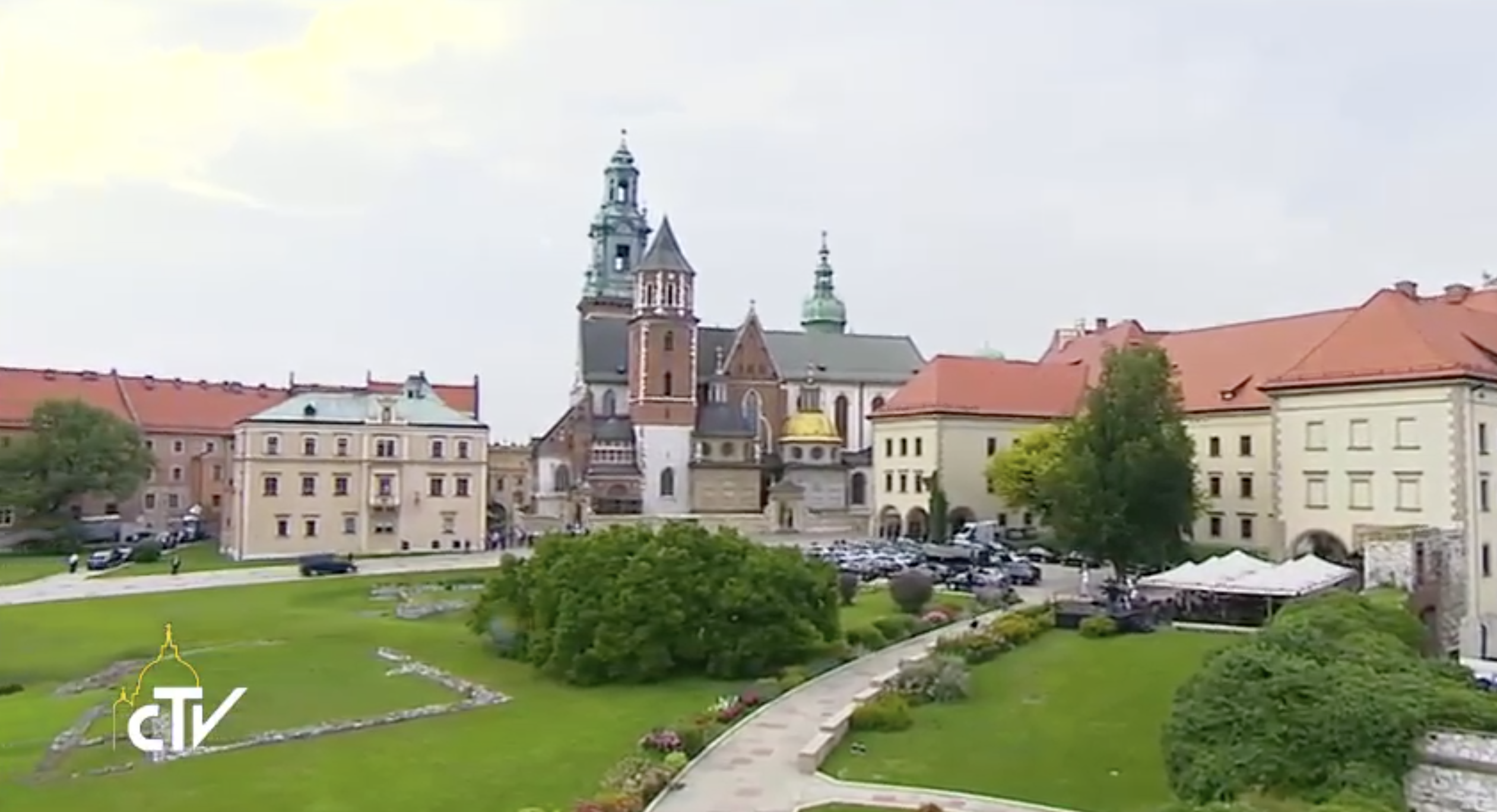Pope Francis arrived this afternoon in Krakow, the former capital of Poland and its most renowned city. With 762,000 inhabitants and situated on the banks of the Vistula, the first written records of its existence date from the 10th century, when it formed part of the Grand Duchy of Moravia from 990. Christianity reached Poland long before the official date – 966 – of the country’s baptism.
Krakow was the capital of the kingdom from 1038, under the Piast dynasty. In the 12th century several Jewish communities were established in the Kazimierz quarter (26% of the population in 1939). After near destruction by the Tartars between 1241 and 1242, the city rapidly resurged under the influence of the population of German origin. After several years of Czech rule, in 1320 Wladyslaw Lokietek was crowned King of Poland for the first time in the cathedral of Wawel, which thereafter became the location for coronation until the end of the monarchy in 1795.
Throughout the centuries the university (Akademia Krakowska), attended by Nicolaus Copernicus, among others, transformed the city into one of the liveliest cultural and artistic centres of Europe, but a fire in 1596 necessitated the transfer of the royal residence to Warsaw, which subsequently became the capital city, leading to the decline of Krakow, further compounded by the partition of Poland. Despite the insurrection of 1794, it came definitively under Austrian rule in 1846, and was restored to the reconstituted Poland only in 1918. In the nineteenth century Krakow once again became a centre for Polish art and culture, and underwent major economic development as a result of the exploitation of the mines of nearby Silesia.
On 1 September 1939, Nazi Germany invaded Poland and during the same month 184 professors from the Jagiellonian University were deported to the Sachsenhausen concentration camp and the Jewish population, consisting of 68,000 people, was exterminated. Three concentration camps were established in the city in which 20,000 non-Jewish Polish citizens and 34 priests were killed. Krakow became the capital of the General Government of the Polish territories under German occupation and not annexed to the Reich. The Nazis confiscated numerous works of art: the rapid intervention of the Soviet army saved from destruction a number of Krakow’s monuments, which had been mined by the Germans, but claimed many victims among the population.
Krakow enjoyed a revival after the Second World War, beginning in 1949 due to rapid demographic growth and the creation of the Nowa Huta industrial quarter at the gates of Krakow, with which the socialist regime sought to demonstrate the strength of its ideology in contrast to the “conservative” and “clerical” capital. It was here on Christmas Eve in 1973 that, in view of the government’s decision not to grant space for the construction of a Catholic church, the then archbishop of Krakow Karol Wojtyla celebrated an open-air Mass attended by an extraordinary number of faithful. St. John Paul II was archbishop of Krakow from 1964 to 1978 and as Supreme Pontiff he visited the city during five of his apostolic trips (1979, 1983, 1991, 1999, 2002), while Benedict XVI visited during his apostolic trip to Poland in 2006 and celebrated Sunday Mass in Blonia, attended by more than a million people.
Aside from the University, Krakow has 14 academic centres attended by 85,000 students, and has 12 major seminaries, and is also the city with the greatest number of museums – 30 – in Poland. In 1978 the monumental complex of Krakow, along with the nearby Wieliczka salt mine, was declared a UNESCO World Heritage Site. In 2000 it was the European City of Culture, and in 2013 it was designated a UNESCO City of Literature, the first European city to receive this title.

Krakow the City: an Overview
«Throughout the centuries the university (Akademia Krakowska), attended by Nicolaus Copernicus, among others, transformed the city into one of the liveliest cultural and artistic centres of Europe»


